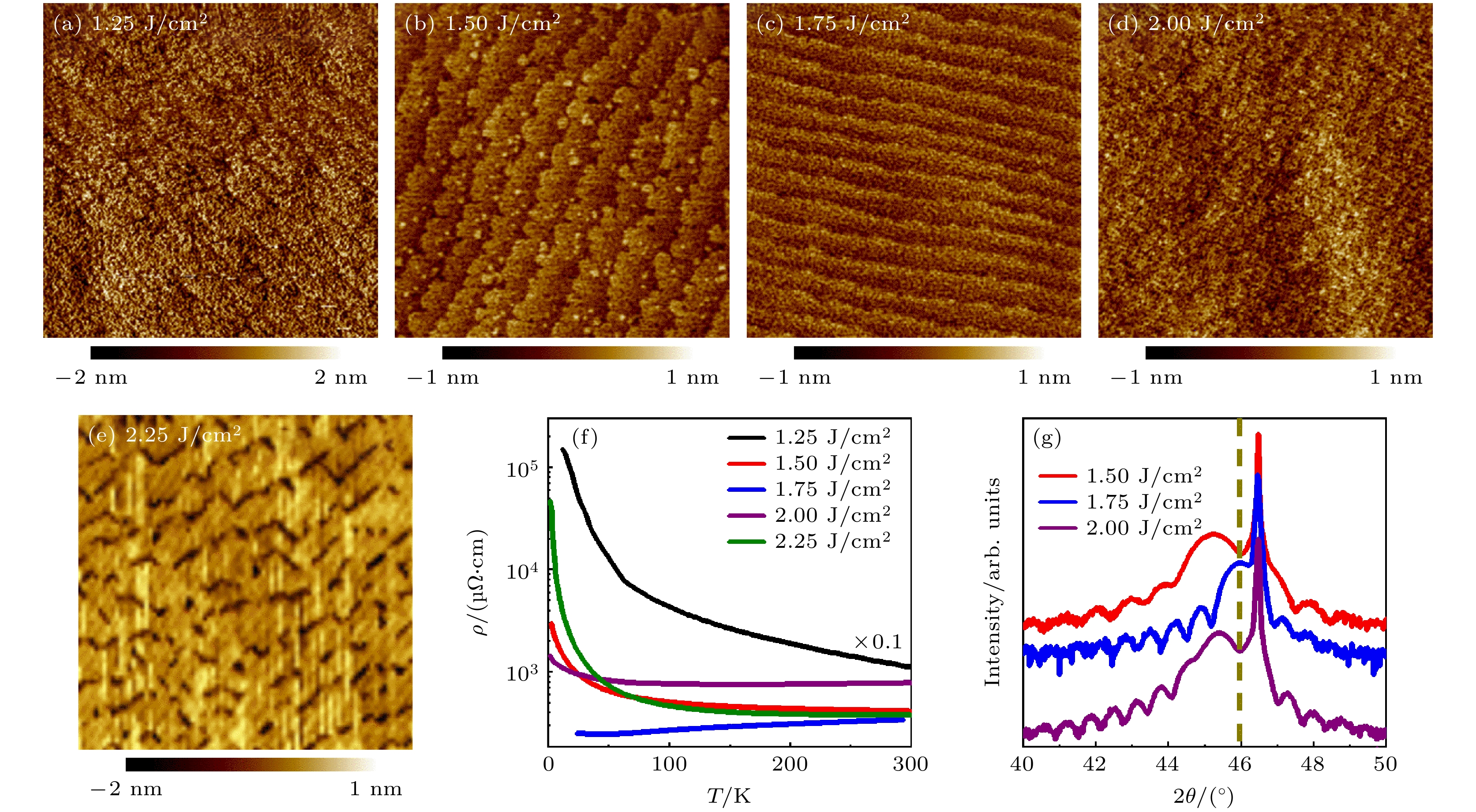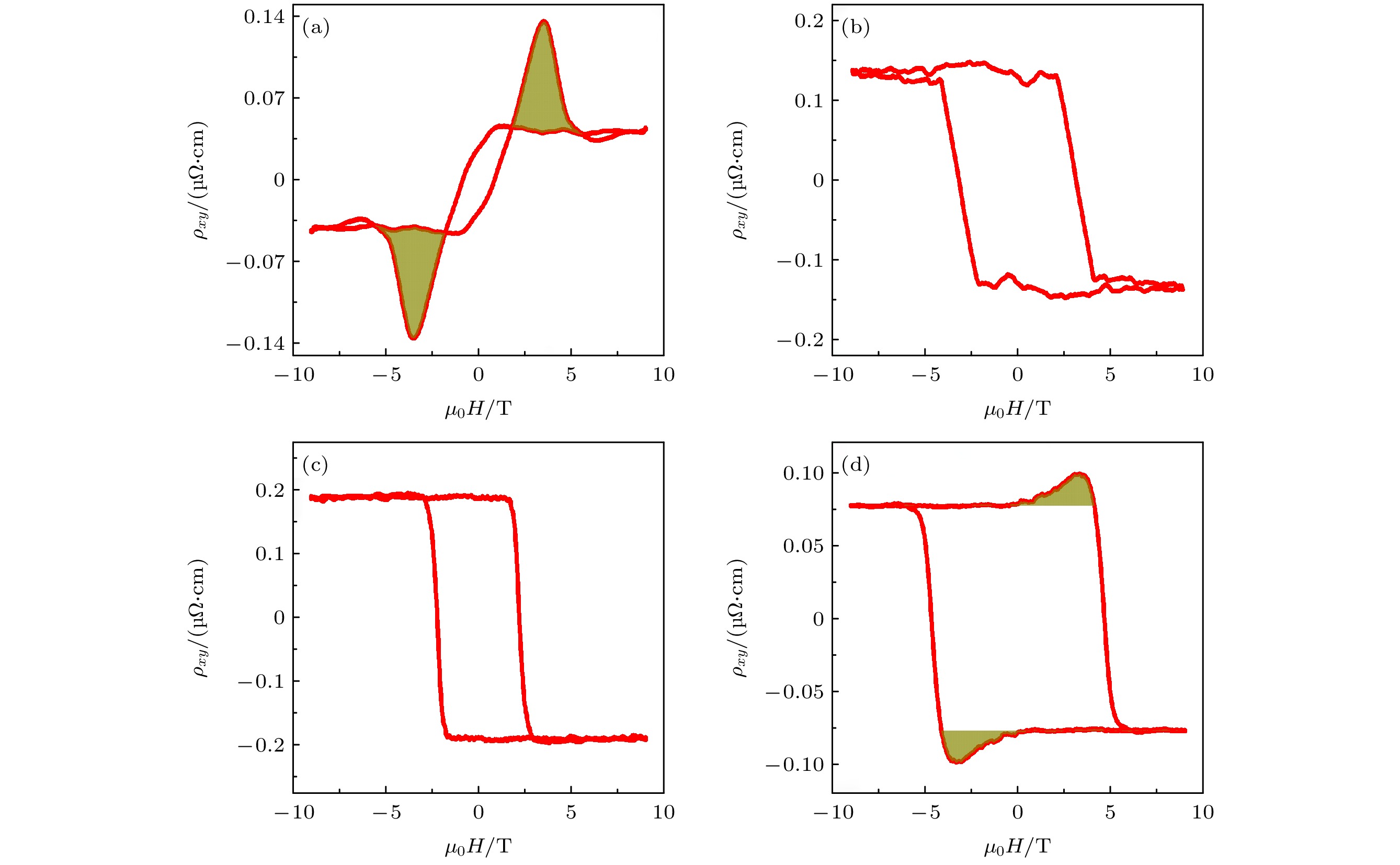As one of the magnetic transition metal oxides, SrRuO
3(SRO) has received much attention in recent years, which is mainly due to its unique itinerate ferromagnetism and the unusual electrical transport properties–behaving as Fermi liquid at low temperature and bad metal at high temperature. In the growth of SRO thin films, there are many factors that can affect the quality of thin films. In this work, we study various factors affecting the growth and quality of SRO thin films by using laser molecular beam epitaxy (laser MBE), including laser energy density, substrate temperature and target surface conditions, and explore their influences on the topological Hall effect (THE) in SRO. For thin films grown at high laser energy density and high temperature, we found that there are large trenches at the edge of steps, which deteriorate the transport properties of the thin films. When using low laser energy density, extra SrO may exist in the films, which also suppresses the conductivity. Films grown at low temperature tend to have poor crystallinity while films grown at high temperature exhibit island structures. The ablation degree of the target surface increases the decomposition of SRO to SrO, Ru and volatile RuO
4, resulting in Ru defects in the grown thin film. The SRO thin film grown under the optimal conditions (1.75 J·cm
–2, 670 ℃, fresh target surface) exhibits the optimal conductivity and the strongest THE. For non-optimal growth conditions that favors thickness inhomogeneity or Ru defects in the film, THE becomes weaker or even disappears. Therefore, we believe that the THE is due to the Dzyaloshinskii-Moriya interaction (DMI) resulting from the interfacial inversion asymmetry and the associated chiral spin structures.














 下载:
下载:


